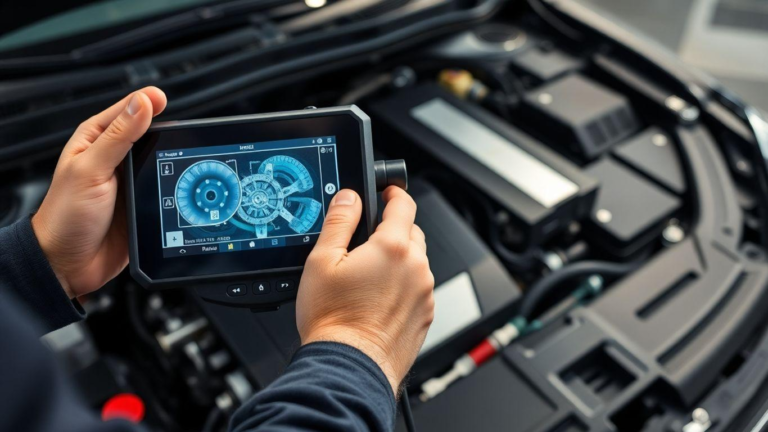The Ultimate Checklist for Choosing a Used Car
The decision to buy a used car may be exhilarating and frightening. There are millions of listings with varying conditions, and it’s easy to overlook important details that could cost you a significant amount in the future. Whether it is an upgrade of your existing motor or your first set of wheels, a well-planned strategy is vital. It is always worth knowing what to look out for before making a final decision. It is even better to have a clue on what to look for before you start your search for used car finance. This checklist will provide a useful, no-nonsense tool that enables you to inspect any used car with confidence, ensuring your investment is solid right down to the first turn of the key.
Start with a Budget and Financing Plan
First, determine your price ceiling and investigate potential sources of funds. By establishing a definite budget, you will make your decisions more realistic and avoid unnecessary expenses on things you do not need. In the process, it is advisable to seek used car finance options early on. It is recommended to compare offers from banks, credit unions, and online providers to find favourable rates within the financial constraints.
Investigate the Vehicle’s Past
Request a comprehensive vehicle history report. A service like HPI or Experian will raise serious red flags, such as write-offs, finance outstanding, or mileage discrepancies. Information such as the number of past owners, MOT failures, and insurance claims provides useful insights into how the car has been driven.
A reputable seller will not hesitate to provide documentation. Re-check the Vehicle Identification Number (VIN) on the V5C logbook, engine bay and windscreen plate.
Scrutinise the Mileage
The low mileage may not necessarily indicate a better offer, but when the numbers are too extreme, questions should be asked. A 10-year-old car with 15,000 miles may have been lying idle for long intervals, and this can cause flat batteries or rust. On the other hand, a typical family hatchback with 150,000 miles may have already undergone a few clutch changes or timing belt replacements- proof of demand. Check the odometer against service stamps and old MOT certificates to ensure consistency.
Look Closely at the Exterior
Take a step back and look at the bodywork in daylight- scratches or bad paintwork is often hidden under artificial light. Irregular panel gaps may be a sign of accident repair, and rust bubbles around the wheel arches, under the doors, or on the sills may indicate more serious corrosion.
The state of the tyres should not be disregarded either. Unbalanced tread wear could be an indication of suspension or steering problems. Ensure that the brands and manufacturing dates embossed on the sidewalls match.
Examine the Cabin Thoroughly
In the interior, observe the seat materials, the dashboard, and the instrument cluster warning lights. Excessive wear on the steering wheel or gear knob can indicate that it has been used more than the mileage suggests.
Ensure that additional options, such as air conditioning, electric windows, infotainment systems, and lights, function properly. Wet odours, condensation on the windows or mould stains on the edges of carpets can be signs of water penetration, which could be caused by leaks or past flooding.
Inspect the Engine and Under the Bonnet
Open the bonnet and look out for oil leaks, cracks in belts or rotten hoses. The coolant, brake fluid and power steering fluid levels must be within range and not sludgy or contaminated. A milky residue in the oil filler cap can indicate a failure of the head gasket.
Turn on the engine when it is cold and pay attention to any knocking, tapping, or excessive smoke from the exhaust. Make a brief idle, then rev the engine lightly and observe the response. Any hesitation, loud rattling or warning lights should be attended to.
Take a Proper Test Drive
Drive the vehicle on a combination of roads, such as residential areas and dual carriageways. Focus on gear shifts, steering feedback, and brake reaction. Rattling, a lack of responsiveness during acceleration, or odd sounds during turns may indicate worn parts.
Note in your mind how the car handles bumps and whether the suspension feels spongy or too firm. Turn off the radio so that you do not miss minute indicators of trouble.
Review the Paperwork and Service History
Request to view the entire record of service. A well-maintained car will exhibit regular oil changes, filter replacements, and other important maintenance tasks. Invoices and garage stamps give a sense of security that the major parts have not been overlooked.
Ensure also that the MOT certificate is up to date and does not have advisory notices. There are sellers who might want to get rid of a vehicle before it becomes too expensive to maintain.
A Methodical Approach Pays Off
Buying a used car should not be a gamble. By being thorough and detail-oriented, you can prevent the secret problems and get a safe, reliable, and well-priced car. Always look at used car finance up front, make sure you cross-check everything and do not rush into signing any documents. It is all about proper preparation.






